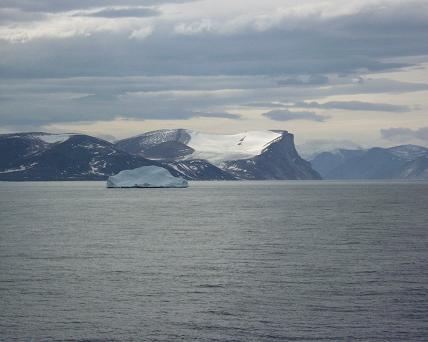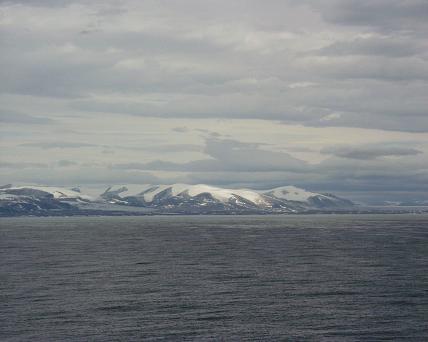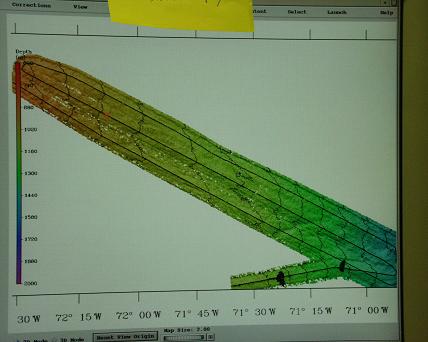|
|
Expedition
Expedition | People
|
Log - July-28-2003
by Gerhard Behrens and Robert McCarthy
Previous | Next
Thank you, thank you, thank you
Robert McCarthy |

Fig 1: Spectacular scenery. |
Yesterday we saw land for the first time since we left St. Johnís Harbor, and the scenery was spectacular (See figs 1 and 2). Seeing these sights, caused me to reflect on what an amazing opportunity I have to be on board the USCGC Healy and to be around a fantastic crew and scientific party. I canít thank Dr. Kelly Falkner, the Chief Scientist, enough for allowing a high school teacher like me to be apart of this cruise. Also I extend my deepest thanks to Dr. Andreas Muenchow, an old friend from my graduate studies, for first contacting me with this unique opportunity. Thanks go out to all the other scientists on board who are willing to take time out to explain their research and techniques to Gerhard Behrens and myself. The crew of the Healy are special people, who are equally friendly and willing to give Gerhard and me tours around the ship. Their love of the ship and devotion to it shines through in conversations with them. The cooks are greatly appreciated for their care and preparation to each meal. Everything has been delicious, and I thank them from the bottom of my stomach. I canít believe I have 3 more weeks of this once in a lifetime experience. And lastly, Iíd like to thank my wife and children for understanding what this means to me, and that it was an opportunity I could not say no to. This thank you note will probably be repeated again sometime soon, since you can never say it enough. Thatís probably one of the reasons I love teaching so much. It is very rewarding when a student unexpectedly comes up to thank you for helping them, or just making their year an enjoyable experience. I am certainly lucky and blessed with family, friends, and career. |
| Last night I experienced working the 15:30 hr to 23:30 hr shift. The ship is constantly taking data 24 hours a day, and unless we are on-station, the data taking is automated. But, this sometimes goes wrong, and someone has to correct the data taking via the computers. There are usually two people assigned to an eight hour shift to monitor the computers looking for bad, spiky data that signals a correction is required. Last night I basically watched Melissa Zweng monitor the Sea Beam, and the underway ADCP computers. She was very patient with me, and I feel more at ease having benefited from her experience. The Sea Beam sometimes had a hard time getting a good bottom reading, so that was periodically switched from an automatic mode to a manual mode. The information obtained from the Sea Beam (See fig 3) was a critical piece of information that the coring team needs to decide upon the 4 locations for their cores. So if nobody was periodically checking that output screen, conceivably some important data could have been lost. Lastly, I was shown how to take a water sample, and this procedure was done three times during my watch. I didnít do too much, but it was good feeling that I was contributing to the science team. |

Fig 2: More incredible scenery. |

Fig 3: Computer screen output from the Sea Beam plotting bottom bathymetry. |
|
